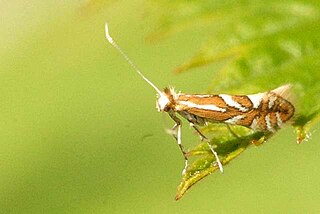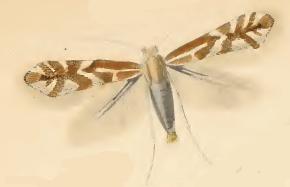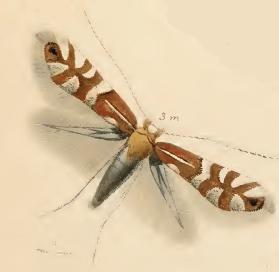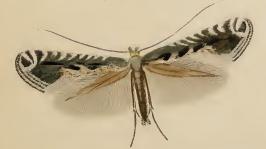
Gracillaria syringella is a moth of the family Gracillariidae. It is found in Europe. It has been introduced in North America.

The leaf blotch miner moth is a moth of the family Gracillariidae. It is found in Europe, including Turkey.

Parornix anglicella is a moth of the family Gracillariidae found in Asia and Europe. It was described in 1850, by the English entomologist Henry Tibbats Stainton, from a specimen from Lewisham, Kent.

Bucculatrix frangutella is a moth of the family Bucculatricidae. It was described by Johann August Ephraim Goeze in 1783. It is found in Europe.

Phyllonorycter oxyacanthae is a moth of the family Gracillariidae found in all of Europe except the Balkan Peninsula. It was described by the German-born Swiss entomologist, Heinrich Frey in 1856. The larvae are known as leaf miners, living inside the leaves of their food plants.

Phyllonorycter coryli, or nut leaf blister moth, is a moth of the family Gracillariidae. It is found most of Europe, except the Balkan Peninsula.

Phyllonorycter viminetorum is a moth of the family Gracillariidae. It is found from Latvia to the Pyrenees and Italy and from Ireland to Ukraine.

Phyllonorycter ulmifoliella is a moth of the family Gracillariidae. It is found in all of Europe, east to Russia and Japan.

Phyllonorycter hilarella is a moth of the family Gracillariidae. It is found in all of Europe, except the Balkan Peninsula and the Mediterranean Islands.

Phyllonorycter nigrescentella is a moth of the family Gracillariidae. It is known from all of Europe except the Balkan Peninsula.

Phyllonorycter rajella is a moth of the family Gracillariidae. It is known from all of Europe, except the Iberian Peninsula and Greece.

Phyllonorycter salictella is a moth of the family Gracillariidae. It is known from all of Europe, east to Russia and Japan.

Phyllocnistis unipunctella is a moth of the family Gracillariidae. It is known from all of Europe.

Parornix betulae is a moth of the family Gracillariidae. It is known from all of Europe, east to Korea. It was recently reported from Canada, with records from Québec, Ontario and British Columbia.

Parornix devoniella is a moth of the family Gracillariidae found in Europe. The larvae are leaf miners, feeding on the tissue inside the leaves of hazels Corylus species.

Parornix scoticella is a moth of the family Gracillariidae. It is known from all of Europe.

Parornix torquillella is a moth of the family Gracillariidae found in Europe. The larvae mine the leaves of Prunus species, such as blackthorn. It was described by the German entomologist Philipp Christoph Zeller in 1850, from specimens found in Florence, Leghorn and Pisa.

Calybites phasianipennella is a moth of the family Gracillariidae. It is known from all of Europe and most of Asia.

Euspilapteryx auroguttella is a moth of the family Gracillariidae. It is known from all of Europe.

Bucculatrix ulmella is a moth of the family Bucculatricidae. It is found in most of Europe, except the Iberian Peninsula, Slovenia and Bulgaria. It was first described in 1848 by Philipp Christoph Zeller.
















